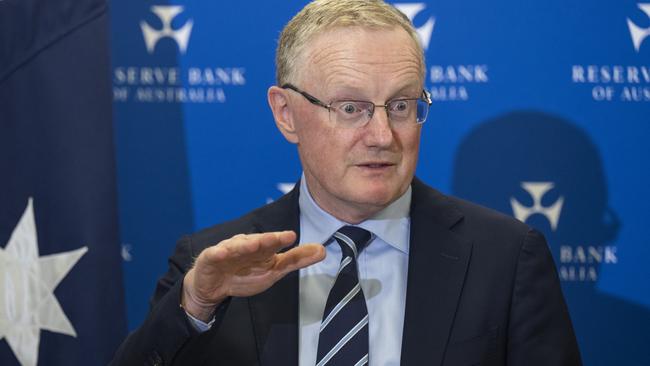RBA needs to ditch the rearview and switch to real-time data

It’s not just former RBA director Warwick McKibbin who has been thumping the table on the issue.
ASIC chairman Joe Longo told The Australian early last month that the conduct regulator faced an “existential risk” over the next decade if it failed to develop cutting-edge digital and data capabilities. New and emerging technologies and products, including the rapid expansion of cryptocurrencies and increasing use of artificial intelligence, were fundamentally changing the landscape.
“There isn’t a business model on the planet these days that doesn’t have a digital aspect to it,” Longo said.
“If we don’t get a grip on these issues, how can I administer the legislation to best effect if I don’t have the data and technology capability when the entities I’m regulating are all data-enabled?”
The RBA carries out its mandate by targeting inflation to help achieve price stability, full employment and prosperity and welfare for the Australian people.
It seems almost quaint that the current elevated inflation rate of 5.1 per cent, or 3.7 per cent on an underlying basis, is really the average change in the price of a basket of goods over the 12 months ending last March.
The question has to be asked: why target an inflation rate in the 2-3 per cent range when it’s based on data which has pretty much passed its use-by date.
Even the federal Treasury used real-time data from a number of sources, including credit card receipts, to develop its policy interventions in the pandemic.
Governor Philip Lowe effectively said on Tuesday that the straw which broke the RBA’s resistance to hiking the cash rate by 25 basis points – the first increase since November 2010 – was “more timely evidence” from business liaison and business surveys conducted that wages growth had picked up.
Lowe said liaison activities showed that stubbornly low 2 per cent growth in incomes was picking up to 3 per cent-plus, and even more than 4 per cent if labour supply was tight.
The time to start normalising interest rates was therefore now – not the June board meeting after next week’s wages report.
While the data dump wasn’t delivered to the RBA in real-time, there was a more timely response than policymaking through the rearview mirror.
Lowe also said in a briefing that, later this year, the board would review the bank’s approach to using forward guidance as a way of minimising volatility and helping financial stability.
From a forecasting perspective, he acknowledged that the RBA had been “embarrassed” by its forecasting lapses as the economy recovered much quicker than expected.
However, faced with the same scenario of a global pandemic, vaccine development likely to take years, the forecast death of tens of thousands of people, and deep economic scarring as unemployment rocketed to 15 per cent, the RBA would probably have made the same decisions.
“Thankfully we were wrong,” he said.
PRESSURE EASING
After years of revenue pressure on the nation’s banks from tumbling interest rates and anaemic loan growth, it’s time to fatten the cow a little as the cash rate moves higher and the all-important net interest margin expands.
The NIM story has been a tale of woe for the major banks over the past decade or so, slimming from 2.26 per cent in 2011 to a skeletal 1.87 per cent in 2021. The cash rate has moved in lock-step.
Lift-off from its emergency level of 10 basis points has been a long time coming, and is expected to ease the unrelenting pressure on NIMs by helping to restore deposit margins.
When Commonwealth Bank unveiled its interim profit in February, chief executive Matt Comyn said the bank’s NIM would expand by four basis points for every 25 basis-point increase in the cash rate. CBA passed the full RBA rate increase on Tuesday.
Since the first half of 2019, the NIM for the nation’s biggest lender has shrunk by 15 basis points due to the impact of 140 basis points of RBA official-rate cuts on low-rate deposits.
Always keen to accentuate the positive, it won’t be a surprise if Comyn’s counterparts release their own institutions’ sensitivity to a rising rate environment.
There will be a lag, however, before the full effect kicks in. In the meantime, revenue growth for the sector is expected to be subdued or declining, according to Citi analyst Brendan Sproules, as a pick-up in lending gets overwhelmed by the impact of a fixed-rate mortgage war.
A danger for the sector looms if revenue comes up short.
When ANZ Bank and Bank of Queensland missed the market’s revenue expectations in their first-quarter and first-half profit results, respectively, both stocks shed 10 per cent of their market capitalisation over a 30-day trading period.
As for the future of the tightening cycle, the best outcome for the banks is a gradual and measured approach to support the sector’s NIM, solid loan growth and resilient credit quality. If inflation is more deeply embedded, a more aggressive approach by the Reserve Bank heightens the risk of a recession and more volatile funding markets.
gluyasr@theaustralian.com.au
Twitter: @Gluyasr



Many lessons will be learned from central banking through the Covid period, not in the least the critical role of real-time data in policy formulation.